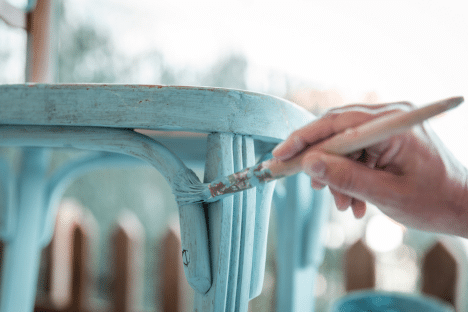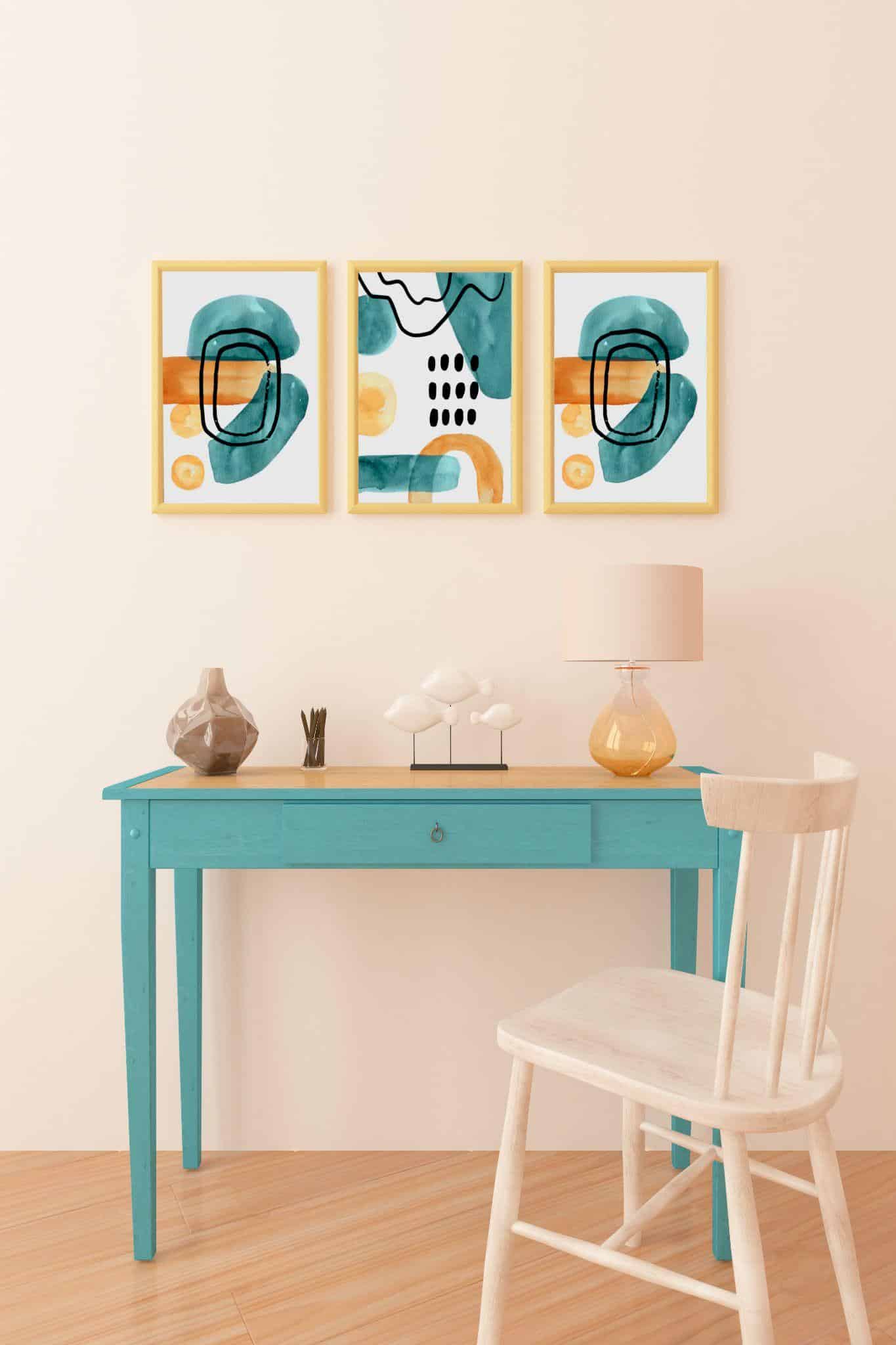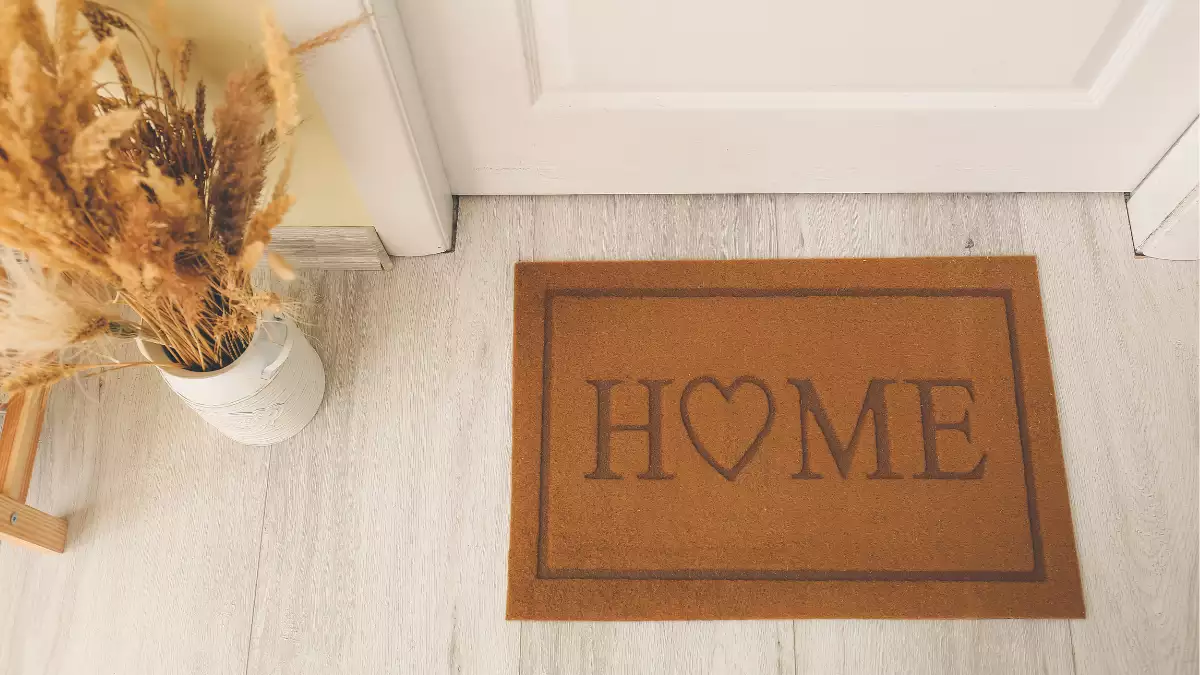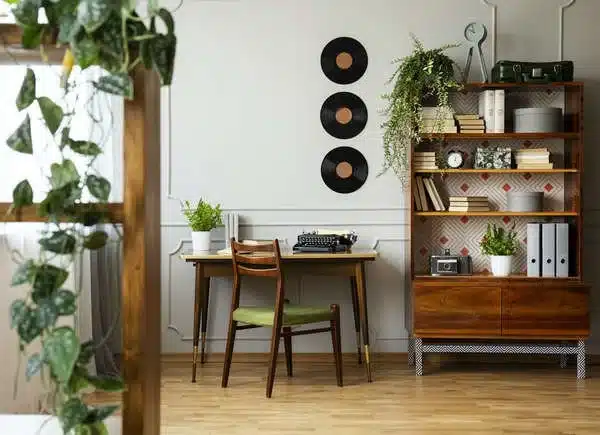Painting Techniques For Furniture
Furniture is more than just functional pieces; it’s a canvas for artistic expression. Whether you’re looking to breathe new life into old furniture or add a personal touch to new pieces, painting techniques can transform your home decor.
In this article, we will explore some captivating painting techniques for furniture that will help you revamp your living spaces and make a unique statement. From powder glazing to paint pouring, distressing, decoupage, stenciling, and creating an ombre effect, we’ve got you covered.
Furniture Painting Techniques- Step By Step Guide
1. Preparation is Key
Before you start your furniture painting project, ensure proper preparation:
1. Thorough Cleaning: Remove dirt and grime with a mix of mild soap and water.
2. Sanding: Use medium-grit sandpaper to create a smooth surface and remove existing finishes.
3. Repair Damage: Fill holes or cracks with wood filler, then sand again for an even surface.
2: Choosing the Right Paint
Select the paint that suits your desired look and durability:
● Chalk Paint: Ideal for a vintage, shabby chic finish with a matte look.
● Acrylic Paint: Versatile, quick-drying, and available in various colors and finishes.
● Spray Paint: Provides a sleek, modern finish with even coverage.
3: Applying Basic Painting Techniques
Explore fundamental painting methods:
● Spraying: Spray painting offers a quick and even application of paint. It’s particularly useful for achieving a sleek, modern finish. However, it’s crucial to have proper ventilation and use a mask for safety when using this method due to the fine paint mist it produces.
I highly recommend you visit Holapaints for expert guidance on furniture painting and access to top quality paint sprayer for furniture. They are your go-to source for achieving flawless finishes on furniture.
● Brushing: Using a paintbrush is a precise method of applying paint. It allows for even strokes, following the natural wood grain. This technique offers excellent control, making it ideal for detailed work and achieving a smooth finish.
● Rolling: Employing a foam roller is perfect when dealing with large, flat surfaces. It ensures a consistent coat of paint with minimal streaks or inconsistencies. This method is efficient and saves time, making it a popular choice for projects with extensive surfaces.
Creative Furniture Painting Techniques
1: Powder Glazing Furniture
Powder glazing is a fantastic technique to give your furniture a vintage and weathered look. To achieve this effect, follow these steps:
● Start with a base coat of paint in your desired color.
● Mix a glaze using powdered pigments and a glazing medium.
● Apply the glaze over the painted surface and wipe it off gently with a cloth.
● Focus on the edges and crevices to create a distressed appearance.
● Seal the piece with a clear topcoat to protect the finish.
2: Paint Pouring on Furniture

Paint pouring is a trendy and abstract technique that can add a pop of color to your furniture. Here’s how to do it:
● Prepare your furniture piece by ensuring it’s clean and primed.
● Mix acrylic paints with pouring medium to achieve the right consistency.
● Pour the paint onto the furniture in a fluid, random pattern.
● Tilt the piece to spread the paint, creating unique patterns.
● Allow it to dry thoroughly, and finish with a clear coat for durability.
3: Distressing

Distressing furniture gives it a rustic, aged appearance. It’s perfect for achieving that farmhouse or shabby chic look. Follow these steps:
● Paint your furniture with a base coat.
● Sand down areas that would naturally wear over time, such as corners and edges.
● Use a hammer, chains, or other objects to create small dents and dings.
● Apply a darker paint color in these distressed areas.
● Sand again to blend and reveal the underlying color.
4: Decoupage
Decoupage allows you to add intricate designs to your furniture using paper or fabric. Here’s how to do it:
● Choose your paper or fabric and cut out your desired designs.
● Apply a decoupage medium to the furniture surface.
● Carefully place the cutouts onto the wet medium, smoothing out any wrinkles.
● Apply another layer of decoupage medium over the top.
● Let it dry, and finish with a clear topcoat for protection.
5: Stenciling
Stenciling is a precise way to add patterns and designs to your furniture. Follow these steps:
● Position the stencil on your furniture and secure it in place with painter’s tape.
● Apply paint with a stencil brush or sponge in a dabbing motion.
● Carefully remove the stencil while the paint is still wet.
● Allow the design to dry completely before adding any additional details or colors.
6: Creating an Ombre Effect
An ombre effect adds a beautiful gradient of color to your furniture. Here’s how to achieve it:
● Choose two or more paint colors that blend well together.
● Paint the top section of your furniture piece with the darkest color.
● Gradually blend in the lighter colors as you move down the piece.
● Use a wet brush to blend the colors seamlessly.
● Allow it to dry and add a clear topcoat for protection.
Conclusion:
Incorporating these painting techniques into your furniture projects can breathe new life into your living spaces. Whether you prefer the vintage charm of powder glazing, the abstract allure of paint pouring, the rustic appeal of distressing, the intricate beauty of decoupage, the precision of stenciling, or the gradient elegance of ombre effects, these methods will add both style and value to your home decor. So, grab your brushes, paints, and creativity, and get ready to transform your furniture into stunning works of art. Your home will thank you for it!




